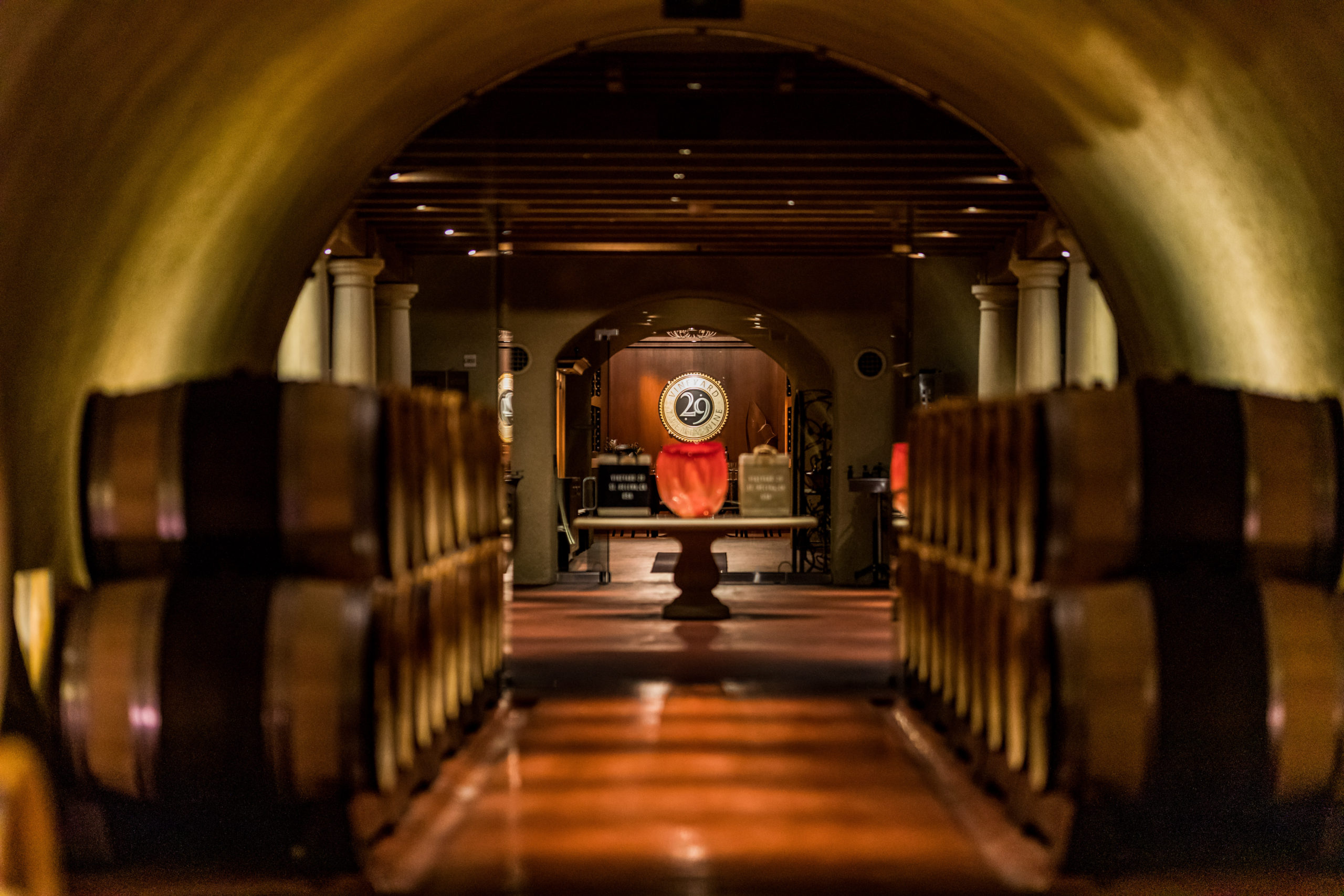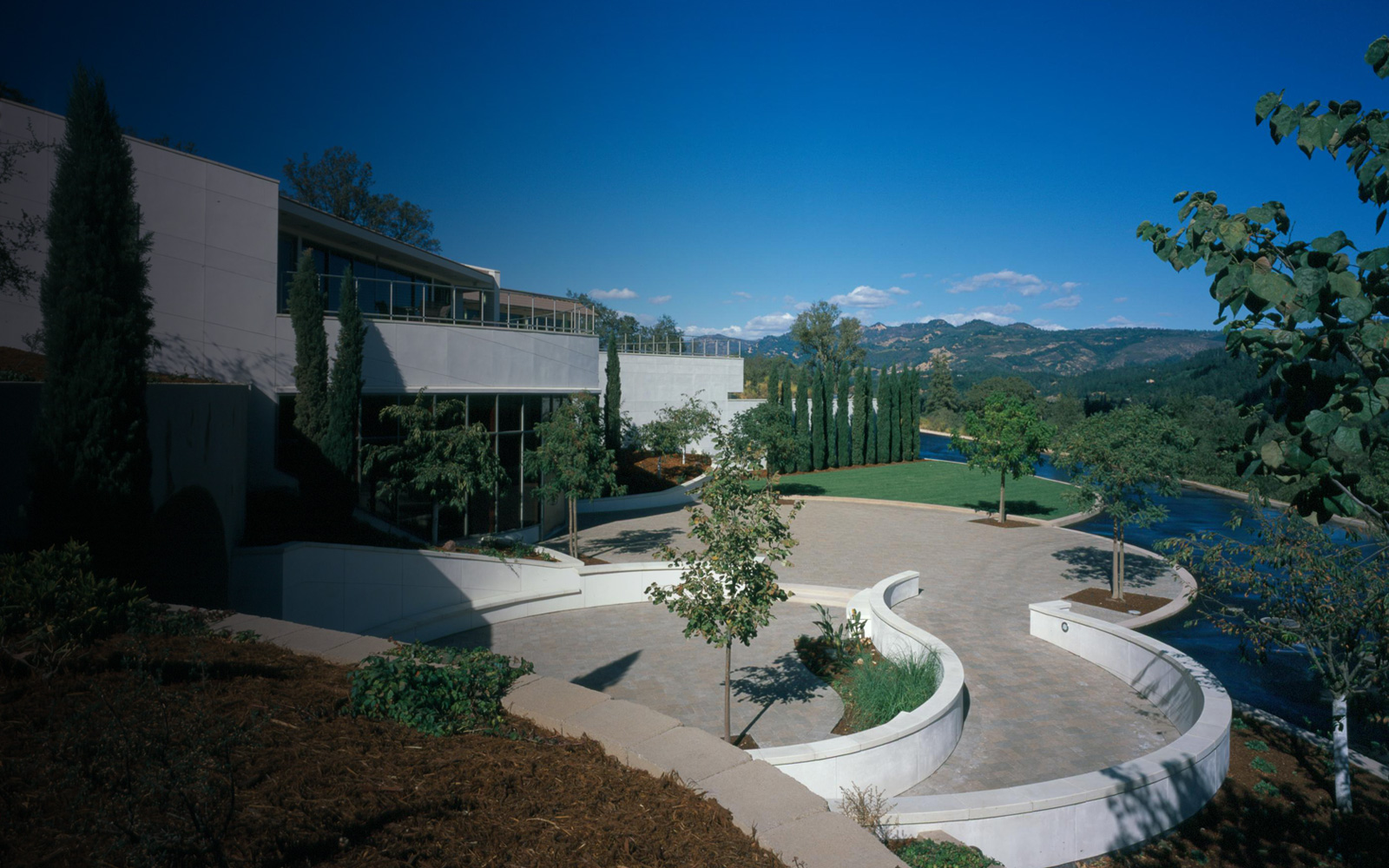


 Close
Close
Applying the Old World theory of “elevage” — raising each vintage as one would raise a child — means giving both the vines and the wines gentle care and attention. We strive to create wines that are the highest representation of the vineyard and the climate in each particular year.
During harvest, the vineyard crews begin before sunrise, harvesting by hand in the cool morning hours. The grapes are then transported to the winery’s crush pad where they are weighed and prepared for processing. The bins of grapes are then lifted into the air and gently dumped into an incline conveyer, which feeds the Bucher Vaslin Oscillys destemmer. The clusters are destemmed and deposited onto a shaker table, which then feeds the Bucher Vaslin Vistalys optical sorter. The winemaking team is then able to adjust the optical sorting by size, shape and color. At the end of the sorting process, whole grapes are deposited into a small transfer tank, which is then lifted by forklift so the grapes may slide gently into our computer-monitored fermentation tanks.
Use of gravity, nature’s own gentle crushing method, is central to the process of winemaking at Vineyard 29. Making this possible are advances such as a specially designed freight elevator used to fill, lift and empty tanks as an alternative to the common pumping of wines around a facility. At Vineyard 29 free-run juice is transferred around the tank room and to barrel in the caves by gravity. Must is gently pressed using a computer-controlled JLB hydraulic press and transferred — by gravity — to barrel. Racking is also done without a pump, this time using inert gas to pressurize the barrel and move wine gently out to tank. These and other technological advancements provide the backbone for the labor-intensive winemaking process at Vineyard 29. They exemplify the combination of Old-World techniques and the most advanced methods available, a design intended to further us in our pursuit of “perfection” in our wines.
 Close
Close
Completed in 2002, our 17,000 square foot winery is built of stone materials, and terraced with landscape plantings to fit beautifully within the natural landscape of the vineyards that surround it. The winery design is gravity flow in nature, increasing the quality of the wine produced and substantially reducing undesirable aeration by pumps and winemaking machinery.
Designed to make the least environmental impact, the facility generates its own electricity using micro turbines. As a byproduct, this system “co-generates” all the winery’s hot and chilled water and cools the winery’s 13,000 square feet of caves.
A suberb blend of function and aesthetics, a walk through the Vineyard 29 caves may be as much a soothing experience for humans as it is for the wines. 13,000 square feet of man-made and immaculately maintained cave space serves not only as a dramatic showplace for our wines, but provides precise regulation of temperature and humidity for aging each barrel and bottle. The extreme care taken to keep our caves in optimal condition, in terms of temperature regulation, and overall cleanliness, allows us to ensure the lowest risk of exposure to elements which might be harmful to our developing wines.
The cave configuration consists of three distinct tunnels reaching 125 feet back into the Mayacamas Mountains. Another 25 feet further into the mountainside from the center tunnel is our Wine Library, 75 feet directly below the sauvignon blanc vineyard.
 Close
Close
We utilize special Capstone micro-turbines to generate electricity on site, and in the process derive all the hot and cold water we use in the facility as a byproduct, while producing one tenth of the emissions of typical utility power. Overall the winery is 250% more efficient in our use of our natural resources than a typical grid power winery. Additionally, Vineyard 29 has its own underground wells and septic system so that all the water we use is sourced, used and treated on site, minimizing our impact on the precious Napa Valley environment.